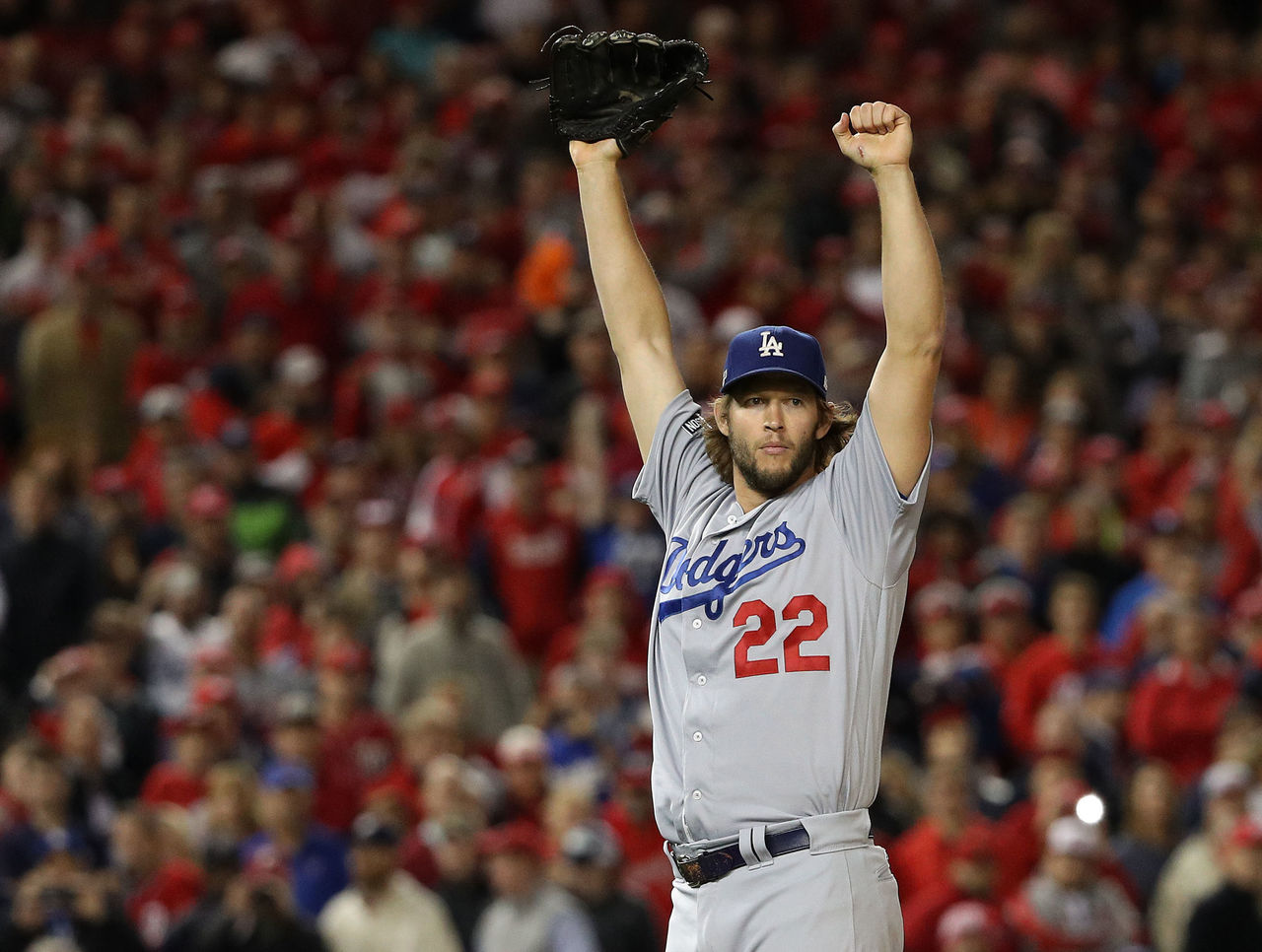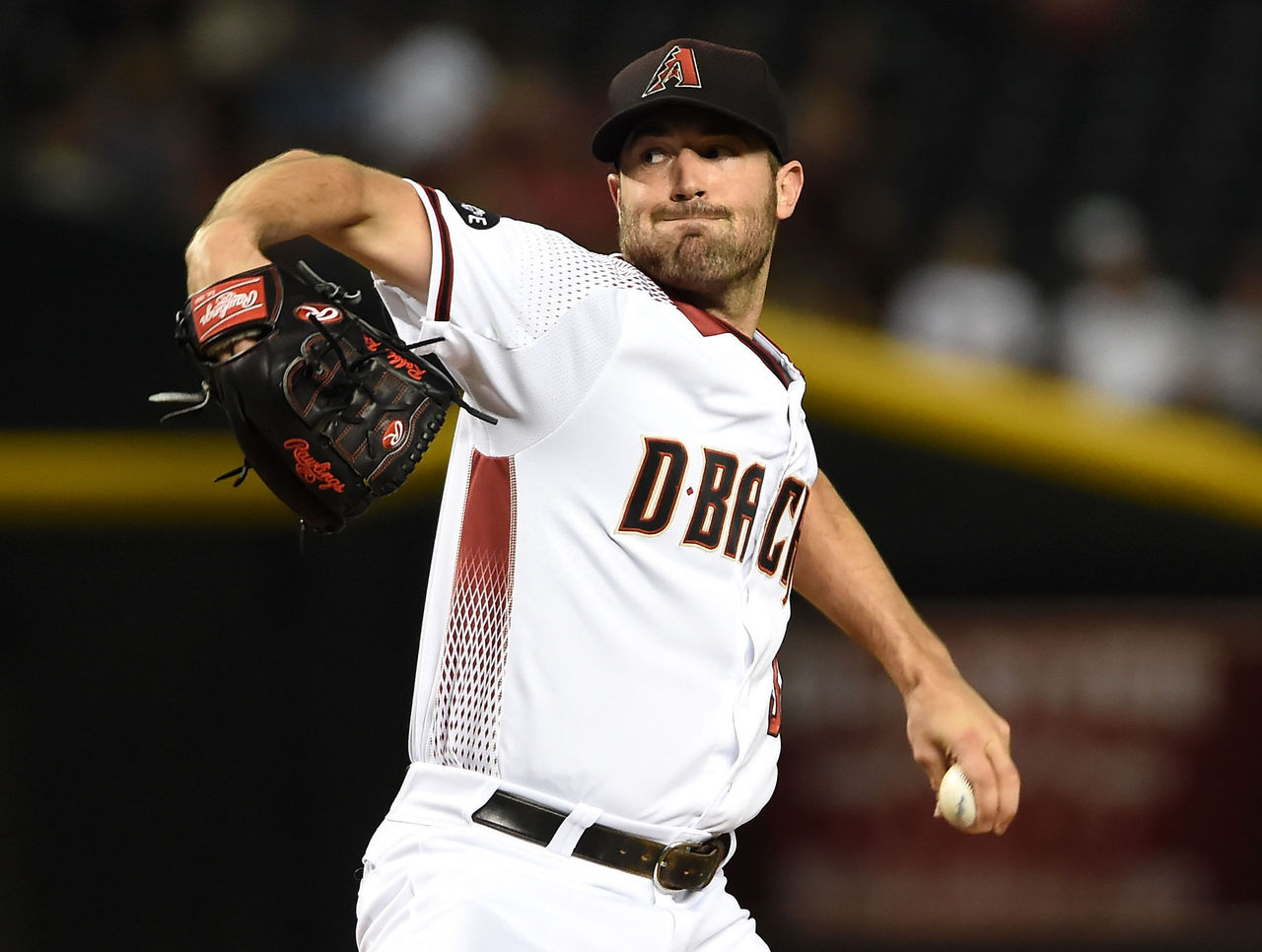Fantasy baseball roundtable - Starting pitcher edition
Follow theScore's fantasy feed on Twitter (@theScoreFantasy) for the latest news, features and more.
theScore put together a comprehensive series of rankings for each position. This week, our fantasy analysts will discuss the positions and several concerns heading into draft season.
Stud = Player expected to have a high floor (excluding the most obvious top names)
Dud = Player expected to drastically underperform ADP/or hurt a team
▲ = Player whose value will be on the rise from previous years
▼ = Player whose value will be on the decline from previous years
| EXPERT | STUD | DUD | ▲ | ▼ |
|---|---|---|---|---|
| Wilson | Noah Syndergaard | John Lackey | Chris Archer | Adam Wainwright |
| Bisson | Carlos Carrasco | Kyle Hendricks | Lance McCullers | Felix Hernandez |
| Ghatak | Justin Verlander | Gerrit Cole | Danny Salazar | Felix Hernandez |
| Wegman | Kyle Hendricks | Jon Gray | Rich Hill | Masahiro Tanaka |
ADP Consensus can be found at FantasyPros.

When are you taking your first pitcher?
Jason Wilson: While this is wholly dependent on circumstance, I don't want to take a pitcher in the first six rounds, at least. Obviously, you need to adjust your approach when others mimic you, because value changes fairly quickly. As is, SP volatility is enough for me to punt the top names in favor of fliers in the late rounds.
James Bisson: In standard drafts, I'm inclined to wait until just about everyone else has at least one starter; I'll use my first handful of picks to secure high-floor, high-upside offensive weapons. I would consider waiting until the ninth or even 10th round in standard formats if I see great hitting value on the board in the first eight rounds.
Josh Ghatak: Depending on moves per week allowed in your league and your interest in streaming, the value of starting pitchers can sway drastically. Personally, I'll be drafting my SP1 in the third or fourth round and look to bolster my rotation by picking up three to four stellar arms before Round 10.
Josh Wegman: If I'm drafting in the latter part of the first round and Los Angeles Dodgers LHP Clayton Kershaw is still there, I will not hesitate to pull the trigger. If Washington Nationals RHP Max Scherzer is there in the middle of Round 2, I will scoop him up. If I miss out on both, I will take San Francisco Giants LHP Madison Bumgarner or New York Mets RHP Noah Syndergaard in the third round. I like to get an established ace to lead my pitching staff.

Which consensus top-20 pitcher raises the most red flags?
Wilson: I can't trust Washington Nationals RHP Stephen Strasburg. He has pitched 127 1/3 and 147 2/3 innings, respectively, in 2015 and 2016. Strasburg has exceeded 200 innings only once in seven seasons. On a pure 'stuff' level, he's among the best, but the risk is too high.
Bisson: I won't be drafting Chicago Cubs RHP Kyle Hendricks at all. Pitchers who rely so heavily on their defense are asking for trouble - and Hendricks falls right into this category, significantly outperforming his FIP last season. He doesn't carry the K rate to support even modest regression, and could easily wind up as this year's version of Houston Astros LHP Dallas Keuchel.
Ghatak: Cleveland Indians RHP Carlos Carrasco is a name I'm avoiding. He has failed to pitch 150 innings in four of his past five seasons and saw his HR/9 rise to 1.29 last year. Carrasco's hard-hit percentage also ballooned to 36.4 after four seasons of sub-30 marks. Those leaky numbers and disappointing innings totals leave me questioning his appeal.
Wegman: New York Yankees RHP Masahiro Tanaka might as well be covered in red flags. For how long can someone possibly pitch with a partially torn UCL? He has made 57 starts and pitched 360 2/3 innings since an MRI revealed his UCL was damaged in July of 2014. His chances of needing Tommy John surgery increase with every pitch. I'm not taking the risk in the early rounds.

Who are you most concerned about having underrated?
Wilson: I may be overstating my concern around the Philadelphia Phillies, and as such projecting RHP Aaron Nola for a greater amount of failure than he's due. His 4.78 ERA in 2016 is understandably concerning, but his 3.08 FIP suggests plenty of bad luck befell him. He struck out close to 10 batters per nine. Even if the wins aren't there, the rest should be.
Bisson: I have no qualms with being the lowest on San Francisco Giants LHP Matt Moore, but I might be a little hard on him. While his ERA with the Giants was exactly the same (4.08) as it was prior to the trade with Tampa Bay, he did raise his K/9 back above 9.0 and should be in line for more wins by the Bay. If he can get his BB/9 back under control, he could be a great value pick.
Ghatak: Pittsburgh Pirates RHP Gerrit Cole was dominant in 2015, registering a 2.60 ERA with a 19-8 record. His career 8.36 K/9 is respectable and his ability to limit home runs helps him avoid blowup outings. If he can stay healthy and the Pirates right the ship, 200 innings and 15 wins are attainable.
Wegman: Chicago White Sox RHP Jose Quintana. I have him lower than anyone else on theScore's panel. He has been remarkably consistent and durable in his career. If he gets traded to a better team he could easily set a career high in wins. If he winds up in the NL he could also set career bests in ERA, WHIP and K/9. But as it stands, his upside is limited as long as he stays with the White Sox.

Which volatile, high K/9 option makes the most strides in 2017?
Wilson: Few pitchers could be seen as big of a disappointment as Tampa Bay Rays RHP Chris Archer, who went 9-19 with a 4.02 ERA. I'm not buying this as the new normal. The wins may still be hard to come by, but he made serious adjustments down the stretch. In his final 14 starts, he lowered his walks, home runs allowed, and posted a 3.25 ERA while striking out 10.15 per nine.
Bisson: Indians RHP Danny Salazar saw a precipitous drop in control and command last season, walking 4.1 batters per nine innings to negate his sensational 10.6 K/9. Look for Salazar to get back to the 2.5-3.0 BB/9 range he sat in for each of his first three major-league seasons - and if he can keep the strikeout rate north of 10, he could wind up as a top-10 pitcher overall.
Ghatak: After trying to make a case for Arizona Diamondbacks LHP Robbie Ray, Yankees RHP Michael Pineda, and Kansas City Royals RHP Ian Kennedy, I honestly didn't see much data indicating the potential for major improvement. As a result, I have to go with Chris Archer, as well. He has shown the ability to dominate in every stat and is much more reputable than the other names in this category.
Wegman: Rays LHP Blake Snell struggled with his control in his rookie season, walking 51 batters in 89 innings, but he did manage to whiff 98 batters. He has a repeatable delivery, a devastating curve he can throw for strikes and a glove-popping fastball. His change up actually ranked as his best pitch, per FanGraphs. He could record 200 Ks even if he's limited to 175 innings.